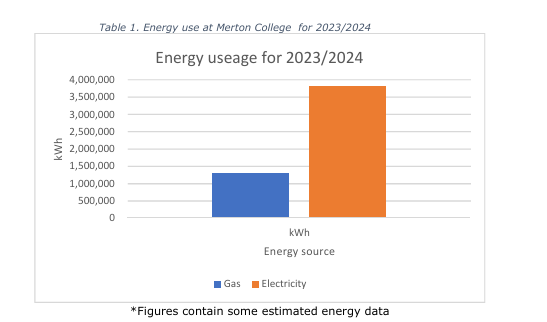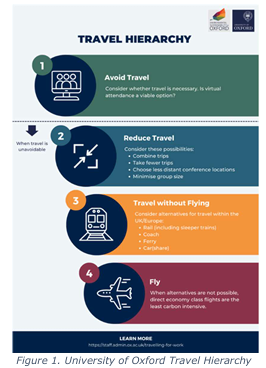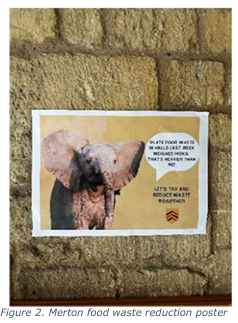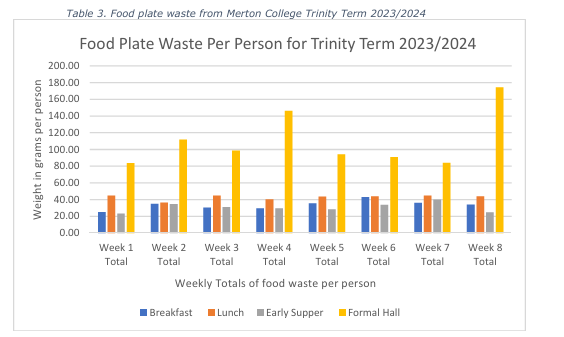Sustainability
The policy is available in PDF format in Appendix 8B of the Bylaws.
1.1. This Sustainability Strategy was approved by the Governing Body of Merton College (“the College”) on 23 June 2025.
1.2. Revisions to this Strategy require the Governing Body’s approval.
1.3. The Sustainability Forum has the duty of monitoring and challenging this Sustainability Strategy and of making recommendations concerning it to the appropriate College Boards and, in relation to general principles or the revision of the Sustainability Strategy, to the Governing Body : Bylaw VII.36A.
2.1. This Sustainability Strategy sets out the College’s commitment to playing its part in ensuring that there is a sustainable environment in which the College can continue to pursue its long tradition of excellence as a place of work, study, and community life.
2.2. The climate and nature crises are among the biggest challenges faced by current and future generations. It is important that we all act to reduce our impact on the environment. The College wants to lead by example to become an institution and community that not only mitigates its impact on the environment but actively improves it.
2.3. The College is committed to minimising its environmental impact and contributing to tackling climate change by reducing and eliminating the carbon emissions associated with its operations. It is also committed to reducing and, where possible, reversing its contribution to biodiversity loss.
2.4. The University of Oxford’s Environmental Sustainability Strategy sets out two ambitious targets : to achieve net zero carbon and biodiversity net gain by 20351. The College has aligned itself with these targets through the adoption of its Policy on Sustainainability and Biodiversity Commitments by which the Governing Body has identified 2035 as its target-date for achieving net zero carbon and biodiversity net gain in the College and across the College’s estates.
2.5. Achieving these targets will require considerable change in how the College and its community operate, and help from the whole community will be needed to achieve them. Working towards a net-zero and nature-positive future will not only allow the College and its community to play an appropriate part in addressing the climate and biodiversity crises, it will bring significant health, social, and other benefits to the College and its members
2.6. . The nature of the College’s operations means that some carbon emissions will continue to be unavoidable. For this reason, there will to some extent be a need to offset the College’s emissions, but offsetting will only be used when the College’s emissions have been reduced as far as possible, and if offsetting is needed, the College commits to following the Oxford Offsetting Principles.
(note 1: https://sustainability.admin.ox.ac.uk/environmental-sustainability-strategy)
3.1. Seven key action-areas have been identified; each action-area is guided by high level commitments alongside specific actions. The key action-areas are:
- Energy use
- Biodiversity
- Travel
- Food
- Waste
- Water
- Investments
3.2. As set out in paragraph 1.3, the Sustainability Forum, which has representation from the whole College community, has the duty of monitoring and challenging this Sustainability Strategy and of making recommendations concerning it to the appropriate College Boards and, in relation to general principles or the revision of the Sustainability Strategy, to the Governing Body.
3.3. A Sustainability Duty has been introduced (Bylaw VI.39A) into the College’s decision-making processes to ensure that due regard is had to the College’s Sustainability and Biodiversity Commitments. Decisions and recommendations must include include both a statement that due regard has been had to the Sustainability and Biodiversity Commitments and a reasonable assessment of the positive or negative effect of a decision or recommendation on achieving them.
4.1. The College currently purchases zero-carbon electricity. This does not mean, however, relaxing the College community’s efforts to reduce its electricity use, as current production-capacity for renewable energy in the United Kingdom is not yet 100% of total demand. The College is fortunate to have beautiful and historic buildings, many of them listed, but this also means that limited retrofitting work can be carried out.
4.2. The College should reduce its gas consumption immediately, which will require help from the whole College community in reducing energy- demand. The College is collecting data to measure the carbon impact of its energy use and will present this data regularly to help drive change.
4.3. Goal
To reduce emissions for gas and electricity to net zero by 2035. This includes the College buildings and central sites owned and operated by the College.
4.4. Actions taken so far
- Energy survey of the College estate.
- Switching to a zero-carbon tariff for electricity.
- Programmed installation of insulation, secondary glazing, and double-glazed windows.
- Replacement of many manually-read meters with automatic meter-reading (AMR) which records consumption-data more accurately.
- Installation of high-efficiency electric heating in students’ rooms.
- Upgrades to lighting-fixtures and controls with LED-lighting installed in College accommodation and the Chapel as well as lighting-controls and timers.
- The use of gas in the College kitchen has been ended, with the kitchen now using induction-hobs.
- Upgrades to white goods including washing-machines to ensure they are A+++ standard, thereby reducing usage of energy and water.
4.5 Data

4.6. Short-term actions
- Continue annual monitoring and reporting of energy use.
- Incorporate energy-efficiency measures and renewables into retrofits, refurbishments and maintenance of College buildings where appropriate.
- Switch all remaining applicable lighting to LED lighting.
- Roll-out of a large-scale engagement-programme to encourage energy-saving across the College.
- Implement enhanced heating-controls to ensure optimum use of heating.
4.7. Long-term actions
- Investigate the installation of renewables.
- Investigate further opportunities for decarbonisation, including by means of heat-pumps or heat-networks.
- Ensure that energy-efficiency and sustainability are at the centre of the College’s programme of refurbishment and maintenance, including upgrades to doors, installation of secondary glazing and increasing the level of insulation.
- Consider adopting the University Sustainability Design Guide2 for any new builds.
(note 2: https://sustainability.admin.ox.ac.uk/files/estatesservicessustainabilitydesignguidepdf)
5.1. The College’s impact on biodiversity needs to be accounted for, negative impacts mitigated, and positive impacts enhanced, to achieve an overall gain in biodiversity from its activities.
5.2 The College has an impact on biodiversity both directly through the management and development of the College’s buildings and estates and indirectly through its operations and supply-chain, including sourcing, consumption and disposal of food, water and materials. Direct impacts will be measured via biodiversity-audits ; indirect impacts will be estimated from supplier information, aligned with methods used by the University. Indirect impacts on biodiversity are much greater and harder to quantify.
5.3 The University’s biodiversity-audit of colleges (2021) reported a good presence of biodiversity across the College’s Oxford sites and estimated that 163.38 tonnes of carbon is stored in vegetation there. It is important to continue to manage these sites for biodiversity and to enhance carbon-sequestration. The College’s Head Gardener and her team have undertaken a number of important actions including restoring two wildflower meadows which have both seen a significant increase in biodiversity.
5.4. Goals
- Identify and address the impacts of the College’s operations on biodiversity and enhance biodiversity on the College main sites and estates.
- Achieve biodiversity net gain from direct and indirect impacts by 2035.
5.5. Actions taken so far
- Two wildflower-meadow restoration-projects undertaken in Great Meadow and Music Meadow, with the aim of creating and connecting a network of green spaces for flora and fauna.
- Biodiversity audit carried out in 2021.
- Nesting-boxes for birds, hedgehogs, and solitary bees positioned around the College.
- Biodiversity walks and lectures given to raise awareness.
- Peat-free compost including potting-compost is produced on site, increasing soil-health.
- Bedding-plants grown in-house, removing the need for transport and associated emissions and securing plant health.
- Surplus plants swapped with other colleges.
- Management of grassy areas to allow wildflowers to naturalise.
5.6. Data
| Asset | Quantity | Unit |
| Trees | ||
| Total trees recorded | 184 | count |
| Species richness | 90 | No. of species |
| Earthworms | ||
| Soil-feeding | 65 | No. of worms |
| Deep-living | 2 | No. of worms |
| Surface-feeding | 2 | No. of worms |
| Insects | ||
| Total abundance | 1362 | count |
| Flies – Diptera | 1156 | count |
| Beetles (including ladybirds and weevils | 37 | count |
| Hymenoptera (including ants, bees, and wasps) | 137 | count |
5.7. Short-term actions
- Undertake an updated biodiversity-audit.
- Further increase engagement in the planting of native pollination-friendly plant-species.
- Provide signs at Music Meadow and Great Meadow, explaining the benefits of a meadow ecosystem.
- Continue adding new native species to Music Meadow and Great Meadow, for example, Cowslip, Snake’s Head Fritillary, and Marsh Marigold. Investigate installation of a pond.
- Review the use of pesticides [there may not be any used].
- Investigate creating green corridors with other colleges.
- Change the mowing-regime to enhance wild areas.
5.8. Long-term actions
- Identify and address the impacts on biodiversity from our operations and supply-chain.
- Increase biodiversity through the planting choices for any new buildings.
- Create a strategy for monitoring and improving biodiversity and carbon sequestration the College’s landholdings.
6.1. Academic staff, students, College staff, and guests all generate considerable travel-emissions. While travel will always be associated with the College’s need to maintain teaching, research, and development, it is important to be mindful of the carbon-emissions generated by travel.
6.2. Unnecessary travel should be reduced and policies should encourage and enable the College community to make sustainable travel-choices, for example by substituting travel by rail or other alternatives for short-haul flights, where possible.

6.3. Goal
To reduce travel-related emissions relating to the College.
6.4. Actions taken so far
- Bicycle and electric car purchase-schemes for Fellows and staff .
- Interest-free loans for season tickets to allow staff to travel via bus or train rather than drive.
- EV available for the Land Agent to conduct regular farm-visits.
- Increased storage for students over vacations.
6.5. Data
Data will be collected from surveys of Fellows, students, and staff, as well as monitoring flights taken on College business.
6.6. Short-term actions
- Ensure options for sustainable travel to the College are advertised to outside visitors.
- Conduct surveys of travel (i) by Fellows and staff on College business and in commuting and (ii) by students.
- Raise awareness of resources for cyclists among the College community, such as bike-doctor days and cycle-safety training.
6.7. Long-term actions
- Consider how to monitor Scope 3 travel-emissions
- Provide more infrastructure to enable staff and students to make active travel choices such as bicycle-racks, pumps and repair-kits, and safe bicycle-storage facilities.
- Consider participation in any University active travel schemes including bus schemes.
7.1. Food-production is responsible for a large amount of greenhouse-gas emissions and is a leading cause of biodiversity-loss.3 Food waste is a large producer of emissions because of the methane released when food breaks down in landfill.
7.2. The College is committed to gaining an accurate understanding of food-emissions and of the impact on biodiversity of food-consumption and food-waste in College.
7.3. The Head Chef and his team make great efforts to ensure that the food served in the College is sustainably sourced. This includes using seasonal suppliers, fish certified by the Marine Stewardship Council, and coffee certified by the Rainforest Alliance.
7.4. Goal
To reduce emissions related to food and food-waste within the College, to increase sustainable food-use, and to continue to monitor and reduce food-waste.
7.5. Actions taken so far
- Award of Marine Stewardship Council certification (the first Oxford college to receive this certification).
- Seasonal fruits and vegetables served as much as possible.
- Food deliveries consolidated where possible to reduce the number of deliveries.
- Waste from food-preparation composted in the Fellows’ Garden.
- Food-waste collected and separated and sent to a local anaerobic-digestion plant.
- Meals pre-booked to avoid food-wastage.
- Food-waste weighed, monitored, and communicated with signs in the Hall.
- Hosted two UNIQ+ students to explore options for reducing food-waste in the College Kitchen.

7.6. Data

7.7. Short-term actions
- Continue where possible to make sustainable choices for the procurement of food.
- Continue to encourage the Kitchen to take account of sustainability in the composition of menus.
- Provide bins for food-waste in College accommodation.
- Explore options for making excess food available for donation after service.
- Improve and continue to monitor data on food-waste.
- Engage with Fellows, students, staff, and visitors, as well as suppliers, on the College’s commitment to serving sustainable food.
- Arrange a sustainable Formal Hall highlighting sustainable food-choices.
7.8. Long-term actions
- Review use of food-matrix tool.
- Investigate on-site growing of food, such as vegetables, herbs, and more fruit.
- Ensure suppliers understand the College’s commitment to sustainable procurement.
8.1. The College produces a substantial amount of waste every year from all its sites which has an impact on the environment.
8.2 Its aim should be to decrease non recyclable waste and increase recycling-rates, maximising the waste that can be recycled. It is important to remember that recycling is only one of the “4 R’s”: rethink, reduce, reuse and recycle.
8.3. Goal
To monitor and report statistics for waste over the next 10 years to achieve a year on-year reduction in non-recycled waste.
8.4. Actions taken so far
- Separate recycling-bins are available across the College in accommodation, offices, and communal spaces.
- Garden-waste is composted and reused. Reduction in single-use plastics in packaging procured by the College.
- British Heart Foundation donation-boxes are located in the College to reduce waste.
- Recycling of hard-to-recycle items such as printer-cartridges, pens, batteries, and plastic films.
8.5. Data

8.6. Short-term actions
- Improved recycling for hard-to-recycle items such as white goods.
- Use of bio-degradable or compostable containers.
- End use of disposable cups in the College bar and at coffee-machines.
- Install refillable water-stations throughout the College.
- Where possible prioritise the procurement of pre-used and upcycled products.
8.7. Long-term actions
- Calculate recycling rates and develop plans to increase these rates.
- Eliminate single-use plastic across the College site including investigating refillable containers for cleaning-products.
- Encourage suppliers to have returnable or reusable containers and to reduce unnecessary plastics and packaging.
- Enable and encourage on-site residents to reduce domestic and miscellaneous waste.
9.1. Water is a vital resource that may become unpredictable through the effects of climate change, such as drought and flooding.
9.2. Not only is water an important resource to conserve, but there are carbon emissions associated with water-use from the energy used to pump, heat, and treat the water used.
9.3. Goal
To monitor and report the College’s water use over the next 10 years and to reduce year-on-year water usage in its current buildings and gardens.
9.4. Actions taken so far
- Water-saving devices fitted in toilets.
- Rain-harvesting at the T.S. Eliot Lecture Theatre building.
- Seep-hoses used in shaded areas. Dishwasher in the College Kitchen upgraded to reduce water-consumption.
- Drought resistant plants (rather than those requiring regular watering) planted in the College gardens.
9.5. Data
Date will be collected for water invoices and monitored.
9.6. Short-term actions
- Accurately record water-consumption
- Continue to install water-saving devices in existing facilities
- Run awareness campaigns to reduce water-use by Fellows, students, and staff.
- Increase the number of water-butts in the gardens.
- Installation of water saving shower heads.
9.7. Long-term actions
- Invest in water-recycling technologies in buildings and gardens.
- Ensure appliances have the highest wateruse efficiency-standards.
10.1. The College has significant landholdings, including farms, as well as a portfolio of other investments. The College’s approach to its investments is set out in its Investment Policy, which is regularly reviewed.
10.2. The College has undertaken a natural capital and biodiversity audit of its estates which has highlighted areas where changes can be made to improve the estates’ biodiversity. It will allow the College to model the effects on overall carbon emissions of changes to its estate-management strategy or the introduction of new projects such as renewable-energy schemes.
10.3. Goals
To continue to have regard to the College’s Sustainability and Biodiversity Commitments and to ensure that the College estates have a positive impact on biodiversity and the local environment.
10.4. Actions taken so far
- Audited the College’s estates to obtain a baseline of natural capital and biodiversity, based on current use and occupancy.
- Running a pilot project on one agricultural estate which is being managed for biodiversity.
- Moved equity-holdings to the L&G Future World ESG Developed and Emerging Market Indices Fund.
- Engaging with Private Equity providers on ESG approaches.
10.5. Data

10.6. Short-term actions
- Have due regard to the College’s Sustainability and Biodiversity Commitments in managing relationships with the College’s tenants and investment managers.
- Review the Investment Policy.
10.7. Long-term actions
- Review new tenancies to encourage tenants to consider opportunities to improve biodiversity and reduce carbon-emissions.
- Invest in properties to increase energy-efficiency and reduce their environmental footprint.
- Consider opportunities for renewable-energy initiatives on the College estates.
- Regularly update and review natural capital and biodiversity audits.
- Keep the Investment Policy under review.